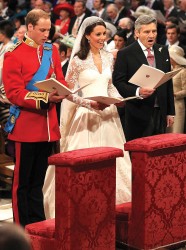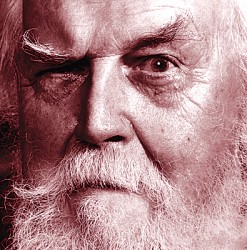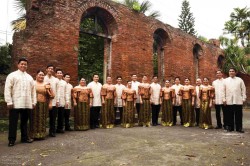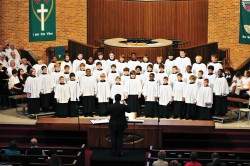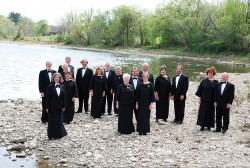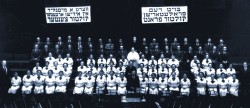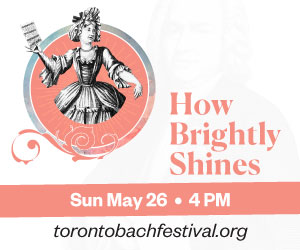As the Fur Flies
Conversations among musicians centre around familiar subjects — the low rate of pay, the perfidiousness of conductors/sopranos/arts granting organizations, the difficulty of finding an accountant who truly understands that artists can’t be constrained by things like HST collection.
After these topics have been exhausted, one can always liven things up by tossing in a verbal grenade about musical education. State firmly that “piano is a lousy first instrument for children” or “dance is more important to musicality than sight-reading” and then stand back and watch the pedagogical fur fly.
Education, after all, is our attempt to define and shape the future of music, to retrieve from the past what we feel we want to bequeath to those who will come after. When memory is at stake, feelings always run high. The more we persist in assigning to varied musical styles and techniques the pointless designations of “good” and “bad” rather than “appropriate, useful and pleasurable in different contexts and for different people,” the more widely and obstreporously opinions vary as to what constitutes the best musical education for children.
Choral education is both a dynamic field of musical training and a battleground for conflicting ideologies. The paradigm that prizes ensemble, sight-reading, pitch accuracy, blend and purity of tone is both well-established and absolutely necessary. Fostering of this model needs constant attention in a world that chronically under-funds school music programs and views music as a frill rather than a central aspect of cultural literacy.
But improvisation, which was an integral part of a “classical” musician’s skill set well into the 19th century, tends to be given short shrift. To be sure, improvisation is difficult to integrate into a choral context, in which ensemble uniformity and fidelity to the printed score are paramount. But it is also neglected because classically trained conductors and piano/vocal coaches often have no idea how to do it themselves, and are ill-equipped to give children the careful attention that this skill needs to be properly developed. A well-rounded musician needs many varied skills, and it’s important to be receptive to not only different types of music, but the different education systems which foster these musics.
Happily, the GTA is home to many excellent children’s choirs, with dedicated choral musicians striving to pass on their traditions and skills. Here are a few of them.
Linda Beaupré’s Bach Children’s Chorus, founded in 1987 and based in east Toronto, has become a fine resource for the education of young singers. On October 1, the BCC performs “Angels in Song” in Barrie’s excellent autumn music festival, Colours of Music. The concert includes the premiere of a new composition by Eleanor Daley, who is composer-in-residence for the choir.
On October 29 The Toronto Children’s Chorus presents a concert entitled “Mysterious Moments” at Timothy Eaton Memorial Church. This concert also includes a new work by a Toronto composer Larysa Kuzmenko, titled Behold the Night.
The Aurora Opera Company Children’s Chorus performs a concert of Broadway and Celtic music in Newmarket on October 15.
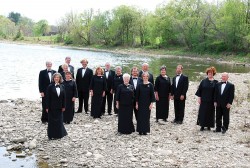 And let’s not forget the extent to which hearing adults sing can also be part of a well-rounded child’s musical education: on October 16 in London, for example, the Karen Schuessler Singers presents “Lions, Tigers and Kids,” an “interactive concert for children with songs from the barnyard and jungle.”
And let’s not forget the extent to which hearing adults sing can also be part of a well-rounded child’s musical education: on October 16 in London, for example, the Karen Schuessler Singers presents “Lions, Tigers and Kids,” an “interactive concert for children with songs from the barnyard and jungle.”
The themes of memory and education are not however solely directed at the young. They come to the fore in two concerts which take as their subject the events of the Second World War. One generation after another shoulders the mantle of passing on to the next, at whatever age the listener is ready to learn, knowledge of both the beauty and the savagery of the past, in the hopes that it is the former quality that will predominate in the future.
In recent years, the Orpheus Choir of Toronto has been establishing itself as an inventive programmer of new and little-known works. On October 25 they join the University of Toronto MacMillan Singers, Hamilton Children’s Choir and the Opera Canada Symphony to present the Toronto premiere of I Believe: A Holocaust Oratorio for Today, by Manitoba composer Zane Zalis. First performed by the Winnipeg Symphony, this work uses the stories of Holocaust survivors as the basis for a 90 minute, 12 movement work.
On October 16, the Canadian Men’s Chorus presents “Honour: Love and Remembrance,” a concert that illuminates and pays tribute to the experience of the Canadian military, past and present. This ensemble, just over a year old, must be one of the newest choral groups on the scene. The concert includes the premiere of a work by Hamilton composer/conductor John Laing.
One of the more tiresome aspects of musical education has been the “Great Man” myths that have distorted our knowledge of the great composers. Our perception of Mozart’s professional struggles and untimely death in Vienna has been rendered that much more poignant by, among other things, the subsequent demonization of his colleague and rival, Antonio Salieri. But the evil character created by Russian poet Alexander Pushkin and mythologized by British playwright Peter Shaffer in Amadeus (a brilliant play, later made into a terrible movie by Milos Forman), is an utter work of fiction, one that bears no resemblance to the solidly professional Viennese musician who also happened to teach composition to Schubert, Beethoven and Liszt.
Listeners can judge for themselves if Salieri’s evil reputation is convincingly refuted in a performance of his Mass in D major by the Pax Christi Chorale on October 23. The concert also includes works by Mozart.
Ben Stein is a Toronto tenor and theorbist. He can be contacted at choralscene@thewholenote.com.


